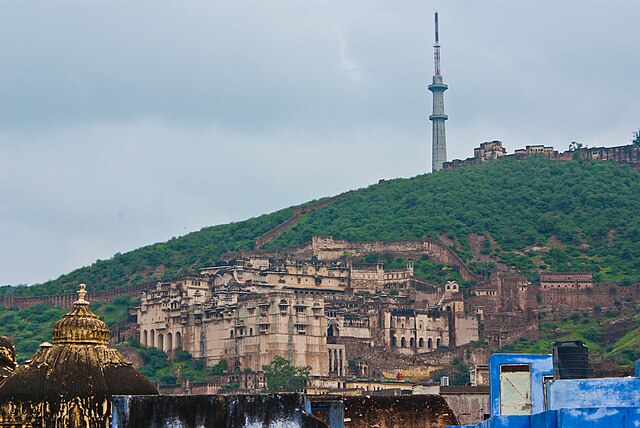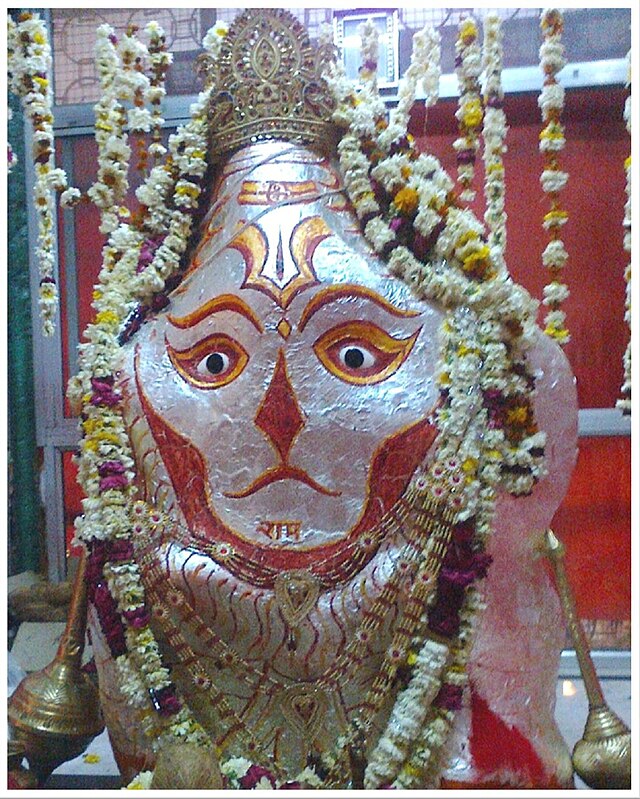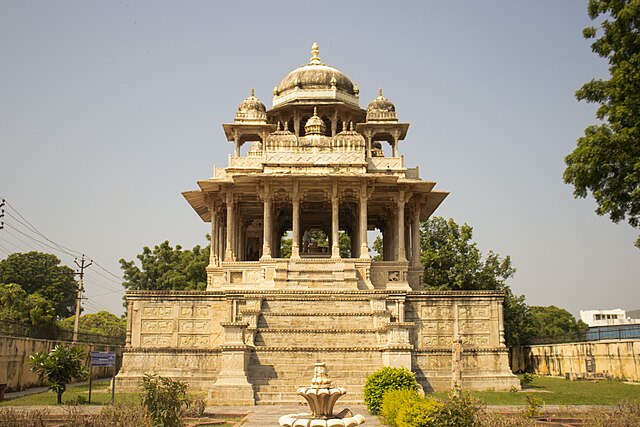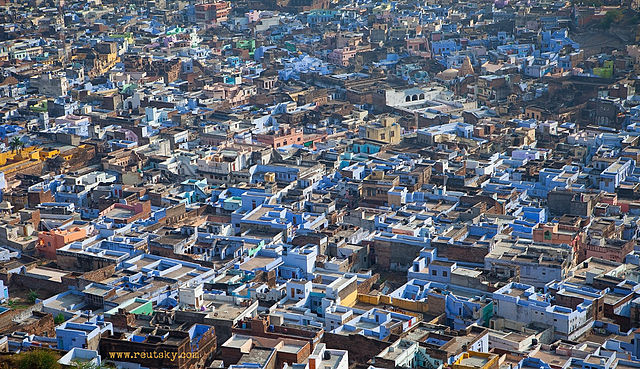Imagine wandering through a town where time seems to stand still, where every corner whispers tales of valor, art, and tradition. That’s Bundi, a lesser-known treasure tucked away in the heart of Rajasthan, India. Often overshadowed by its more famous neighbors like Jaipur and Udaipur, Bundi is a place where history, culture, and natural beauty collide to create an experience that’s nothing short of magical. Known as the “Small Kashi” for its spiritual vibe and architectural splendor, Bundi invites you to step off the beaten path and discover a Rajasthan that’s raw, authentic, and utterly captivating. In this guide, we’ll take you through the must-visit spots, the rich history, and the vibrant culture of Bundi, along with practical tips to make your visit unforgettable.
Why Bundi Should Be on Your Travel Radar
Bundi is like that hidden book in a library that, once opened, reveals a story you can’t put down. Unlike the bustling tourist hubs of Rajasthan, Bundi offers a quieter, more intimate experience. Its narrow lanes, blue-painted houses, and ancient forts make it feel like a page torn from a medieval fairy tale. Whether you’re a history buff, an art enthusiast, or simply someone looking to escape the crowds, Bundi has something for everyone. So, why should you visit? Because it’s a place where you can feel the pulse of Rajasthan’s past while soaking in its serene present.
A Glimpse into Bundi’s Rich History
Bundi’s story stretches back centuries, rooted in the legacy of the Hada Chauhan Rajputs. Founded in the 7th century by Raja Bunda Meena, according to some local legends, the town became a significant center of the Hadoti kingdom. By the 14th century, the Hada Chauhans had established their rule, building forts and palaces that still stand tall today. The town’s strategic location, surrounded by the Aravalli hills and nourished by rivers, made it a thriving hub for trade and culture. Over time, Bundi’s rulers fostered a love for art and architecture, leaving behind a legacy that continues to draw travelers from across the globe.
The Hadoti Kingdom’s Golden Era
The Hadoti kingdom, with Bundi as one of its key centers, was a powerhouse of Rajput valor and creativity. The kingdom’s rulers were not just warriors but also patrons of art, commissioning intricate paintings and architectural marvels. The famous Bundi School of Miniature Paintings, known for its vivid colors and detailed storytelling, flourished under their patronage. This golden era, spanning the 16th to 18th centuries, saw the construction of iconic structures like Taragarh Fort and Raniji ki Baori, which we’ll explore later. It’s like stepping into a living museum where every stone has a story to tell.
Top Attractions in Bundi You Can’t Miss

Bundi is a treasure chest of attractions, each one more fascinating than the last. From majestic forts to serene lakes, here’s a rundown of the must-see spots that make this town so special. Ready to explore?
Taragarh Fort: The Star of Bundi
Perched atop a hill like a crown, Taragarh Fort is Bundi’s pride and joy. Built in 1345, this imposing structure offers panoramic views of the town’s blue rooftops and the surrounding Aravalli hills. Walking through its gates feels like stepping into a time machine. The fort’s massive reservoirs, now dry, once sustained its residents, while its crumbling walls still echo tales of battles and bravery. Don’t miss the Bhim Burj, a colossal cannon that’s a testament to the fort’s military might. Pro tip: Wear sturdy shoes for the steep climb, and visit early to avoid the midday heat.
Garh Palace: A Canvas of Art and Architecture
At the foot of Taragarh Fort lies Garh Palace, a masterpiece of Rajput architecture. This sprawling complex, built over centuries, is a labyrinth of courtyards, pavilions, and frescoed walls. The Chitrashala, an art gallery within the palace, is a must-visit for its stunning Bundi School paintings depicting scenes from Krishna’s life, royal hunts, and courtly love. The palace’s intricate carvings and jali work are like poetry etched in stone, making it a paradise for photographers and history lovers alike.
Chitrashala: Where Art Comes Alive
The Chitrashala is the heart of Garh Palace, a gallery that feels like a love letter to Bundi’s artistic heritage. Its walls are adorned with vibrant murals painted in the 18th century, showcasing the Bundi School’s signature style—think rich blues, greens, and golds telling stories of mythology and royalty. Imagine standing in a room where every inch is a canvas, each painting whispering tales of a bygone era. It’s a humbling reminder of how art can transcend time.
Raniji ki Baori: The Queen’s Stepwell
Stepwells, or baoris, are Rajasthan’s architectural gems, and Raniji ki Baori is Bundi’s crown jewel. Built in 1699 by Rani Nathavati Ji, this 46-meter-deep stepwell is a marvel of engineering and aesthetics. Its high arched gates and intricate carvings, including images of elephants and deities, make it a visual feast. Once a hub for social and religious gatherings, the baori still exudes a sense of grandeur. Visiting it feels like diving into a pool of history—pun intended!
Other Notable Stepwells in Bundi
Bundi is home to over 50 stepwells, each with its own charm. The Nagar Sagar Kund, a pair of twin stepwells near Chauhan Gate, was built to provide water during famines. Dabhai Kund, shaped like an inverted pyramid, is another stunner with its ornate steps leading to the water below. These stepwells aren’t just functional; they’re a testament to Bundi’s ingenuity and love for beauty. Exploring them is like uncovering hidden chapters of the town’s story.
Sukh Mahal: A Literary Retreat
Tucked by the serene Jait Sagar Lake, Sukh Mahal is a small palace that packs a big punch. This two-storied summer retreat of Bundi’s rulers is famous for inspiring Rudyard Kipling, who reportedly penned parts of his novel *Kim* here. The palace’s tranquil setting, surrounded by orchards and lakes, makes it a perfect spot to soak in Bundi’s charm. Picture yourself sipping chai by the lake, with the palace’s reflection dancing on the water—pure bliss!
The Cultural Heartbeat of Bundi

Bundi’s culture is like a vibrant tapestry woven with threads of tradition, art, and community. From its festivals to its local crafts, the town pulses with life and color. Let’s dive into what makes Bundi’s culture so unique.
Bundi Utsav: A Celebration of Heritage
If you want to see Bundi at its liveliest, plan your visit during the Bundi Utsav, held annually in the month of Kartik (October-November). This festival is a riot of colors, showcasing traditional music, dance, and crafts. From folk performances to camel races, the Utsav brings Bundi’s heritage to life. It’s like a party where the whole town is invited, and you’re the guest of honor!
Bundi’s Miniature Paintings
The Bundi School of Miniature Paintings is a cultural gem that deserves its own spotlight. These paintings, known for their vivid colors and intricate details, often depict scenes from mythology, nature, and royal life. Local artists like Artist Gopal continue this tradition, creating stunning works that you can buy as souvenirs. Visiting a local art studio is like stepping into a world where every brushstroke tells a story.
Exploring Bundi’s Natural Beauty
Bundi isn’t just about forts and palaces; it’s also a haven for nature lovers. Surrounded by the Aravalli hills and dotted with lakes and orchards, the town offers plenty of spots to reconnect with nature.
Jait Sagar Lake: A Serene Escape
Nestled near Sukh Mahal, Jait Sagar Lake is a peaceful retreat where you can unwind and soak in Bundi’s beauty. The lake, surrounded by lush greenery and hills, is perfect for a quiet evening stroll or a boat ride. Watching the sunset here, with the silhouette of Taragarh Fort in the background, feels like a scene from a postcard.
Ramgarh Vishdhari Tiger Reserve
For wildlife enthusiasts, the Ramgarh Vishdhari Tiger Reserve is a must-visit. Located in Bundi’s southeastern region, this reserve is part of Rajasthan’s tiger conservation efforts, connecting Ranthambore and Mukundra Tiger Reserves. A safari here might reward you with sightings of tigers, sloth bears, and other wildlife. It’s like stepping into a real-life jungle book!
Practical Tips for Visiting Bundi
Planning a trip to Bundi? Here are some tips to make your visit smooth and memorable. Think of this as your trusty guidebook to navigating the town like a pro.
Best Time to Visit
Bundi is at its best from October to March when the weather is cool and pleasant, perfect for exploring forts and stepwells. Summers can be scorching, so avoid April to June unless you’re a fan of intense heat. Monsoons (July to September) bring lush greenery but can make some hilly areas tricky to navigate.
How to Get to Bundi
Bundi is well-connected by road and rail. The nearest major city, Kota, is just 40 km away and has a railway station with regular trains from Delhi, Jaipur, and Mumbai. You can also take a bus or taxi from Kota or other nearby cities like Udaipur or Jaipur. The closest airport is in Jaipur, about 200 km away. Renting a car gives you the freedom to explore at your own pace.
Where to Stay
Bundi offers a range of accommodations, from heritage havelis to budget guesthouses. Haveli Braj Bhushanjee, a beautifully restored heritage property, offers a taste of royal living. For budget travelers, guesthouses like Bundi Vilas provide cozy stays with great views. Staying in a haveli is like living in a piece of history—complete with modern comforts!
Savoring Bundi’s Culinary Delights

No trip to Bundi is complete without indulging in its food. Rajasthani cuisine is a burst of flavors, and Bundi’s local eateries serve up dishes that’ll leave you hungry for more. From spicy dal baati churma to sweet jalebis, the town’s street food stalls and restaurants are a foodie’s paradise. Don’t miss trying kachoris at the stalls near Raniji ki Baori—they’re crispy, spicy, and oh-so-delicious!
Conclusion
Bundi, Rajasthan, is more than just a destination; it’s an experience that lingers long after you’ve left. Its forts, stepwells, and paintings tell stories of a glorious past, while its serene lakes and vibrant festivals offer a glimpse into its living culture. Whether you’re climbing the steep paths of Taragarh Fort, marveling at the Chitrashala’s murals, or simply sipping chai by Jait Sagar Lake, Bundi has a way of stealing your heart. So, pack your bags, lace up your shoes, and get ready to discover a Rajasthan that’s as authentic as it gets. What are you waiting for? Bundi’s waiting to share its magic with you!
FAQs About Visiting Bundi, Rajasthan
1. What is the best time to visit Bundi?
The ideal time to visit Bundi is between October and March when the weather is cool and pleasant, making it perfect for exploring outdoor attractions like forts and stepwells.
2. How can I reach Bundi from Delhi?
You can take a train from Delhi to Kota (about 5-6 hours) and then a short bus or taxi ride (40 km) to Bundi. Alternatively, drive or take a direct bus from Delhi, which takes around 8-9 hours.
3. Are there any entry fees for Bundi’s attractions?
Yes, attractions like Taragarh Fort and Garh Palace require a combined ticket of around INR 100 for Indian nationals and INR 300 for foreigners. Some stepwells may have nominal fees, while others are free on special days like Rajasthan Day.
4. What are some must-try dishes in Bundi?
Don’t miss out on Rajasthani specialties like dal baati churma, kachori, and jalebi. Local street food stalls near Raniji ki Baori are great spots to sample these delicacies.
5. Is Bundi safe for solo travelers?
Absolutely! Bundi is a safe and welcoming destination for solo travelers. Just stick to well-lit areas at night and follow basic travel precautions, like keeping your belongings secure.

